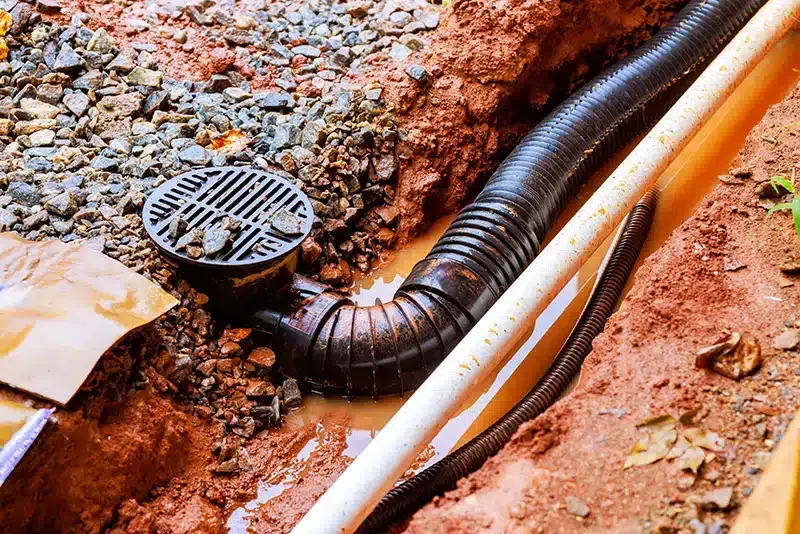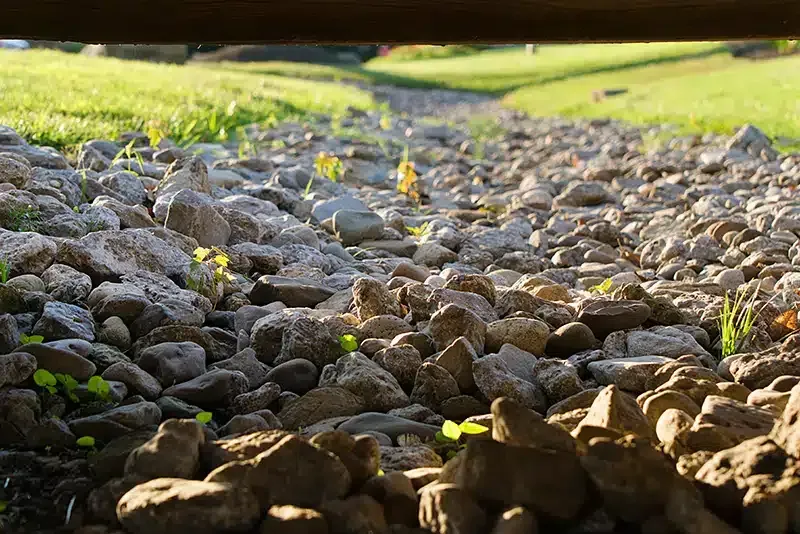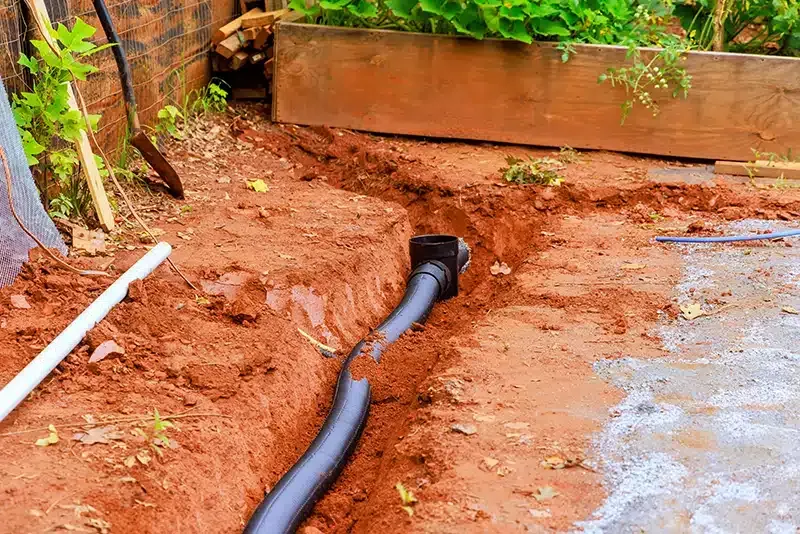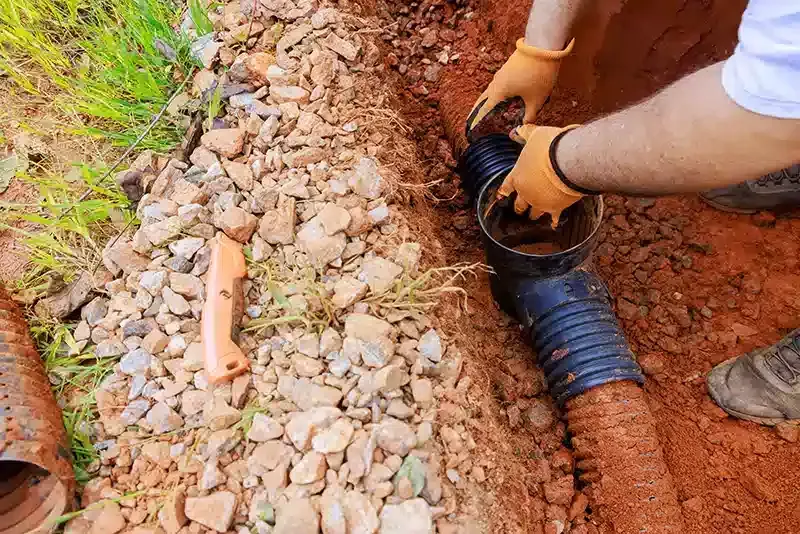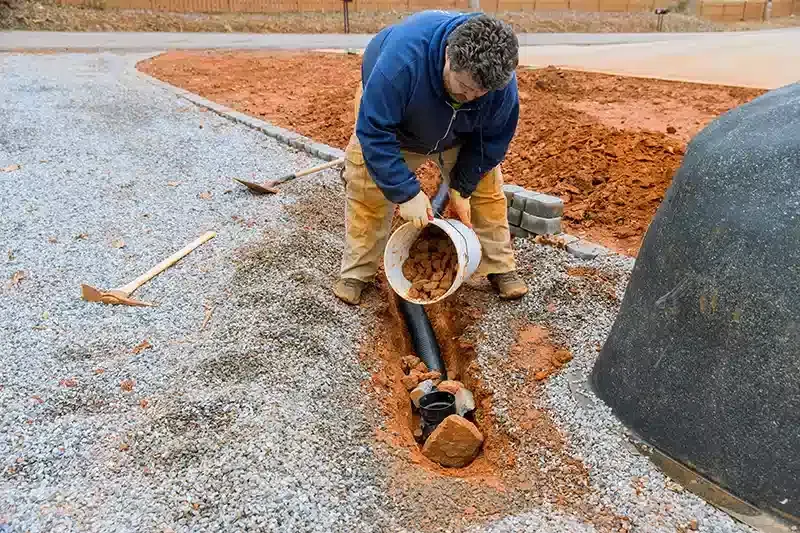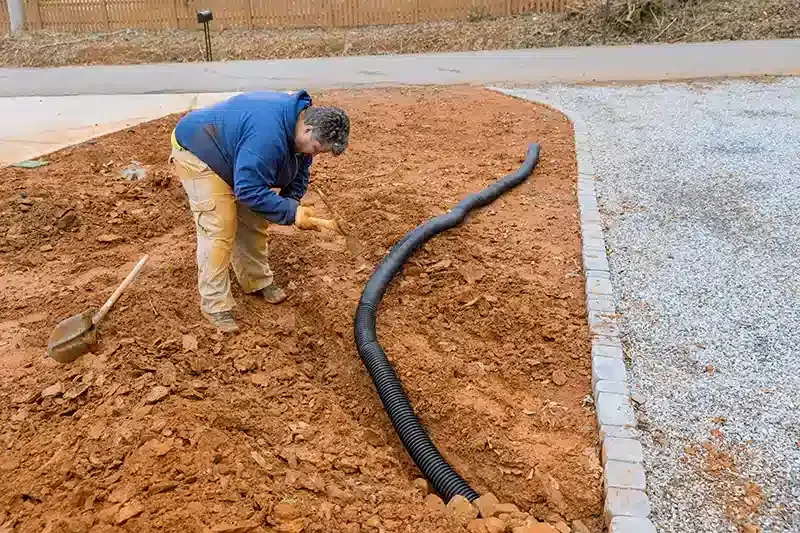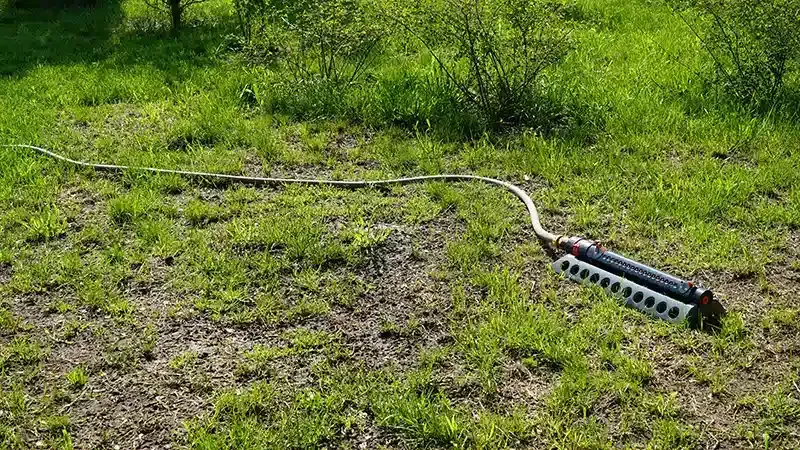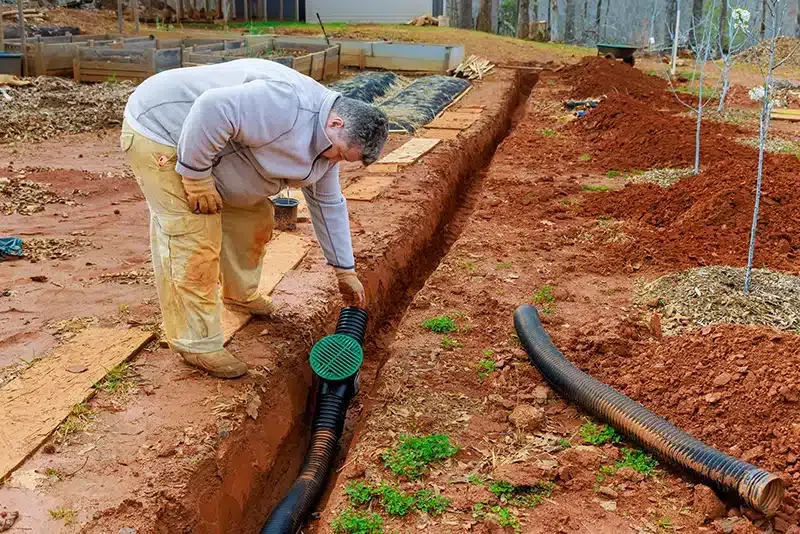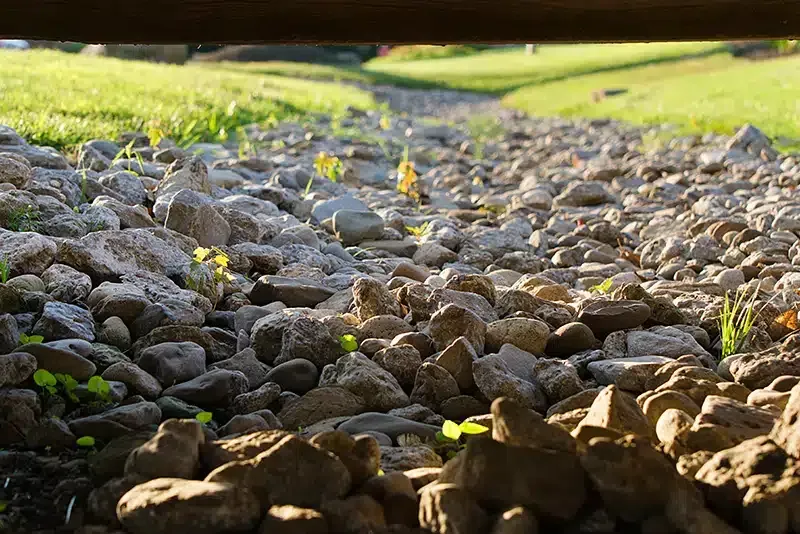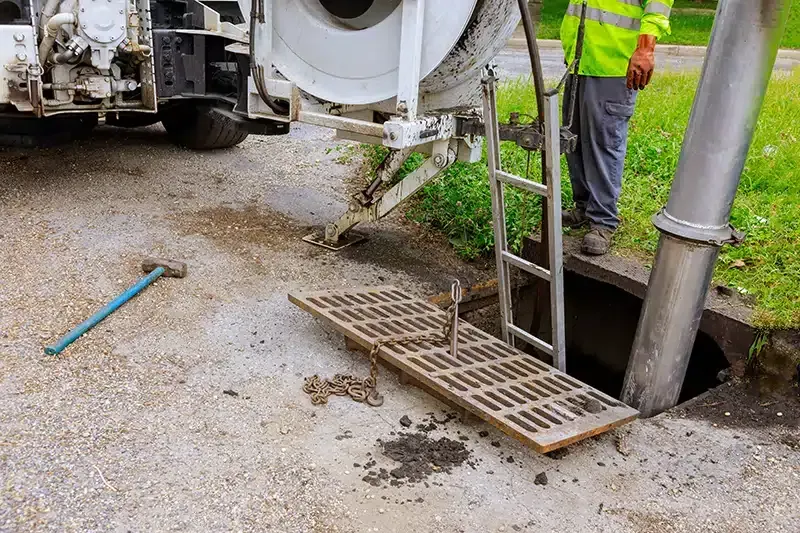Why Should You Inspect Your Yard Before French Drain Installation?
Why Should You Inspect Your Yard Before French Drain Installation?
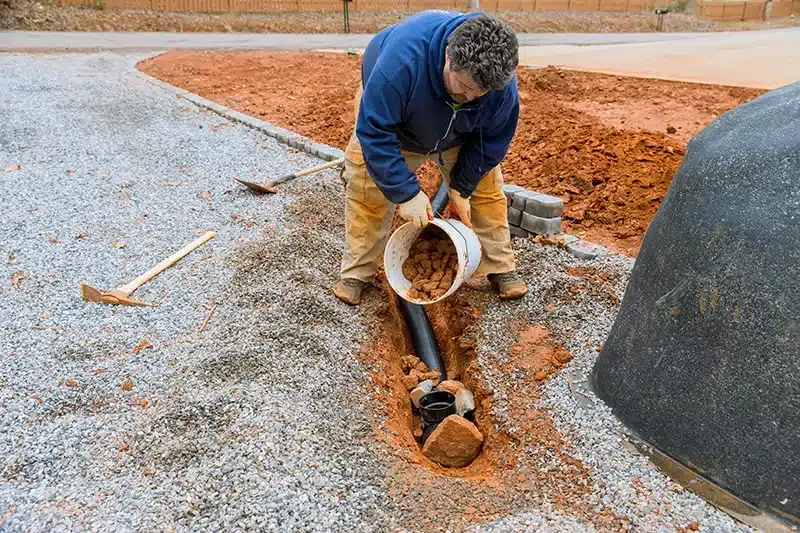
A French drain is a powerful solution for managing standing water, protecting your home’s foundation, and preventing erosion in your yard. But before any digging begins, it’s critical to conduct a thorough yard inspection.
Why? Because installing a French drain without first understanding your landscape’s natural drainage patterns, soil type, and potential obstacles can lead to poor performance or unnecessary damage. Pre-installation inspection helps ensure your system is effective, long-lasting, and tailored to your yard’s specific needs.
In this blog, we’ll break down the key reasons why a yard inspection should always come first.
Identify Drainage Problem Areas
Pinpointing exactly where and why water collects is the first step to a successful French drain installation.
- Spot pooling water locations: Identifying low spots or areas where water collects after rain helps determine the best location and path for the French drain.
- Track water flow direction: Observing how water moves during and after storms shows how runoff travels across your yard and helps avoid directing water to new problem areas.
- Check for signs of erosion: Bare patches of soil or displaced mulch may indicate areas where fast-moving water is eroding your landscape, which could benefit from targeted drainage.
Evaluate Soil Conditions and Composition
Different soil types impact how water drains and how your French drain should be installed.
- Test soil permeability: Some soils, like clay, drain slowly, while sandy soil drains too quickly. Knowing your soil type helps determine how deep and wide the trench should be.
- Assess compaction levels: Heavily compacted soil may need to be loosened or amended before installation to ensure proper water absorption and drain performance.
- Detect underlying issues like hardpan: A dense layer beneath the topsoil may prevent water from seeping downward and could affect trenching or require additional measures like vertical drains.
Locate Utility Lines and Obstacles
Avoiding underground hazards is crucial for safety and compliance.
- Call 811 before digging: Before any trenching begins, utility companies must mark underground gas, electric, and water lines to prevent costly and dangerous damage and ensure utility line safety.
- Look for tree roots and buried objects: Mature trees and landscaping features may hide roots, irrigation lines, or other buried materials that could block the drain path.
- Check for existing drainage systems: Inspecting for sump pump outlets, downspout drains, or older French drains helps ensure new systems don’t conflict or overload existing infrastructure.
Ensure Proper Drain Placement and Slope
An inspection helps map out the most efficient route and slope for water to drain away.
- Determine optimal trench route: Planning the path of least resistance helps the drain perform more effectively without unnecessary bends or barriers.
- Establish a consistent slope: A slope of about 1% (or 1 foot of drop per 100 feet) ensures gravity moves water efficiently through the pipe and out to a safe discharge point.
- Verify an appropriate outlet location: Ensuring the endpoint of the drain is at a safe location—such as a dry well, drainage ditch, or street curb—prevents water from flowing back toward the home.
Prevent Costly Mistakes and Rework
Taking time to inspect your yard upfront can save time, money, and frustration down the line.
- Avoid unnecessary trenching: A thorough plan based on inspection avoids digging in the wrong places, minimizing disruption to your lawn or landscaping.
- Prevent ineffective drainage: Skipping inspection could result in a drain that doesn’t fully resolve water issues, requiring reinstallation or costly upgrades.
- Support long-term drain performance: A well-inspected and properly planned system is more likely to function efficiently for years without recurring maintenance or repair needs.
Installing a French drain without inspecting your yard is like building a road without surveying the land—it may work for a while, but problems are likely to arise. A detailed pre-installation inspection helps you identify problem areas, understand your soil, avoid hazards, and design a yard drainage solutions system that truly works for your unique landscape.
Whether you’re a homeowner dealing with soggy spots or a contractor planning a large project, don’t skip the inspection. It’s the foundation for effective, efficient, and lasting yard drainage.
